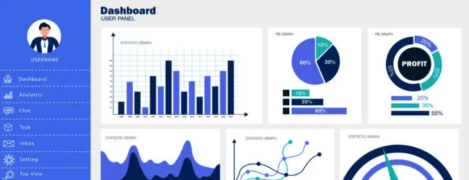Key Components of a Successful CX Strategy

A Customer Experience (CX) strategy is more than just delivering good service—it’s a holistic approach to ensuring every interaction a customer has with your business leaves them satisfied, loyal, and ready to recommend your brand. For small teams, crafting a thoughtful CX strategy can be a game-changer, providing a competitive edge over larger competitors.
In this article, we’ll break down the key components of a successful CX strategy and provide actionable tips to help you implement them.
1. Clear Customer-Centric Vision
At the heart of a successful CX strategy is a clear, customer-first vision that guides every decision. This vision should articulate how your team aims to treat and delight customers, creating a shared goal for everyone in your organization.
How to Define Your Vision:
- Focus on customer satisfaction and loyalty.
- Create a simple, memorable mission statement, like: “We deliver hassle-free, delightful experiences at every touchpoint.”
Example: A small online clothing store might focus on “providing fast, personalized, and eco-friendly shopping experiences.” This vision influences everything from packaging to customer support.
2. Deep Understanding of Your Customers
To create meaningful experiences, you need to understand your customers’ needs, preferences, and pain points.
Steps to Gain Insight:
- Customer Personas: Create profiles of your ideal customers based on demographics, behaviors, and goals.
- Feedback Collection: Use surveys, interviews, or social media to ask customers about their experiences.
- Journey Mapping: Chart the customer’s journey, from discovery to post-purchase, to identify opportunities for improvement.
Example: A small coffee shop might discover through feedback that customers value fast service during weekday mornings but prefer a relaxed atmosphere on weekends.
3. Seamless Omni-Channel Experience
Customers expect consistency, whether interacting with your brand online, in-store, or via social media. A successful CX strategy ensures a unified experience across all channels.
How to Ensure Consistency:
- Align messaging, branding, and service levels across platforms.
- Use CRM tools to track customer interactions and preferences, ensuring continuity.
- Test transitions between touchpoints, like switching from an online inquiry to a phone call.
Example: A small fitness studio ensures clients can book classes through their app, receive email confirmations, and get in-studio reminders with the same friendly tone and professionalism.
4. Employee Empowerment
Your team plays a crucial role in delivering excellent CX. Empower employees to make decisions that prioritize the customer and invest in their training.
How to Empower Employees:
- Provide training in communication, problem-solving, and empathy.
- Offer guidelines but allow flexibility for unique customer needs.
- Encourage feedback from employees about CX challenges and opportunities.
Example: A boutique hotel trains its staff to resolve minor guest complaints on the spot, such as offering complimentary perks for a delayed check-in, ensuring a positive outcome without management approval delays.
5. Proactive Problem-Solving
Anticipating customer needs and addressing potential pain points before they arise is a hallmark of an excellent CX strategy.
Proactive Strategies:
- Monitor frequently asked questions and preemptively address them in onboarding or FAQs.
- Use analytics to identify common issues and create solutions.
- Follow up with customers after key interactions to check satisfaction and gather feedback.
Example: A small SaaS company sends onboarding emails with how-to videos and troubleshooting tips, reducing support tickets during the first month of use.
6. Personalization at Scale
Customers expect personalized experiences, even from small teams. By leveraging data, you can tailor interactions to make customers feel valued.
How to Personalize CX:
- Use CRM tools to store customer preferences and purchase history.
- Segment customers for targeted marketing campaigns.
- Send personalized emails or recommendations based on behavior.
Example: A small bookstore might send an email recommending new arrivals in a customer’s favorite genre or offer a discount on their birthday.
7. Measurable CX Metrics
You can’t improve what you don’t measure. Establish key performance indicators (KPIs) to track the success of your CX strategy.
CX Metrics to Track:
- Net Promoter Score (NPS): Measures customer loyalty by asking how likely they are to recommend your business.
- Customer Effort Score (CES): Tracks how easy it is for customers to complete a task, like resolving an issue.
- Customer Satisfaction (CSAT): Measures overall satisfaction after a specific interaction.
Example: A subscription box service uses NPS surveys after each delivery to gauge satisfaction and identify areas for improvement.
8. Continuous Improvement
CX is not a one-time effort—it’s an ongoing process. Regularly analyze feedback, monitor trends, and refine your approach to stay ahead of customer expectations.
Steps for Continuous Improvement:
- Schedule regular team reviews of CX performance metrics.
- Stay updated on industry trends and emerging customer needs.
- Test and implement new tools or methods to improve efficiency and engagement.
Example: A small marketing agency reviews client feedback quarterly and adjusts its onboarding process to address recurring concerns.
9. Efficient Use of Technology
For small teams, leveraging technology is essential to scale CX efforts without overextending resources.
Tools to Enhance CX:
- CRM Systems: Keep track of customer interactions and history (e.g., HubSpot, Zoho).
- Automation Tools: Use chatbots, email automation, and self-service options to save time.
- Analytics Tools: Monitor customer behavior and feedback to spot trends.
Example: A local catering business uses automated text reminders for order pickups, ensuring customers feel informed and valued.
10. Emotional Connection with Customers
Ultimately, CX is about creating emotional bonds that turn customers into loyal advocates. People remember how your brand made them feel.
Ways to Build Emotional Connections:
- Show gratitude with thank-you notes, surprise discounts, or personalized messages.
- Tell your brand’s story to resonate with customers’ values.
- Celebrate milestones, like anniversaries or purchases, with meaningful gestures.
Example: A small nonprofit organization sends a heartfelt message showing the impact of a donor’s contribution, strengthening the relationship.
Conclusion
A successful CX strategy is built on a foundation of understanding, personalization, and continuous improvement. For small teams, the key lies in leveraging your agility and ability to form genuine connections with customers.
By focusing on these core components, your business can create experiences that delight customers, foster loyalty, and set you apart from competitors.
Ready to elevate your CX strategy? Start with small, actionable changes—listen to your customers, train your team, and track your progress. Every step brings you closer to delivering exceptional experiences.







